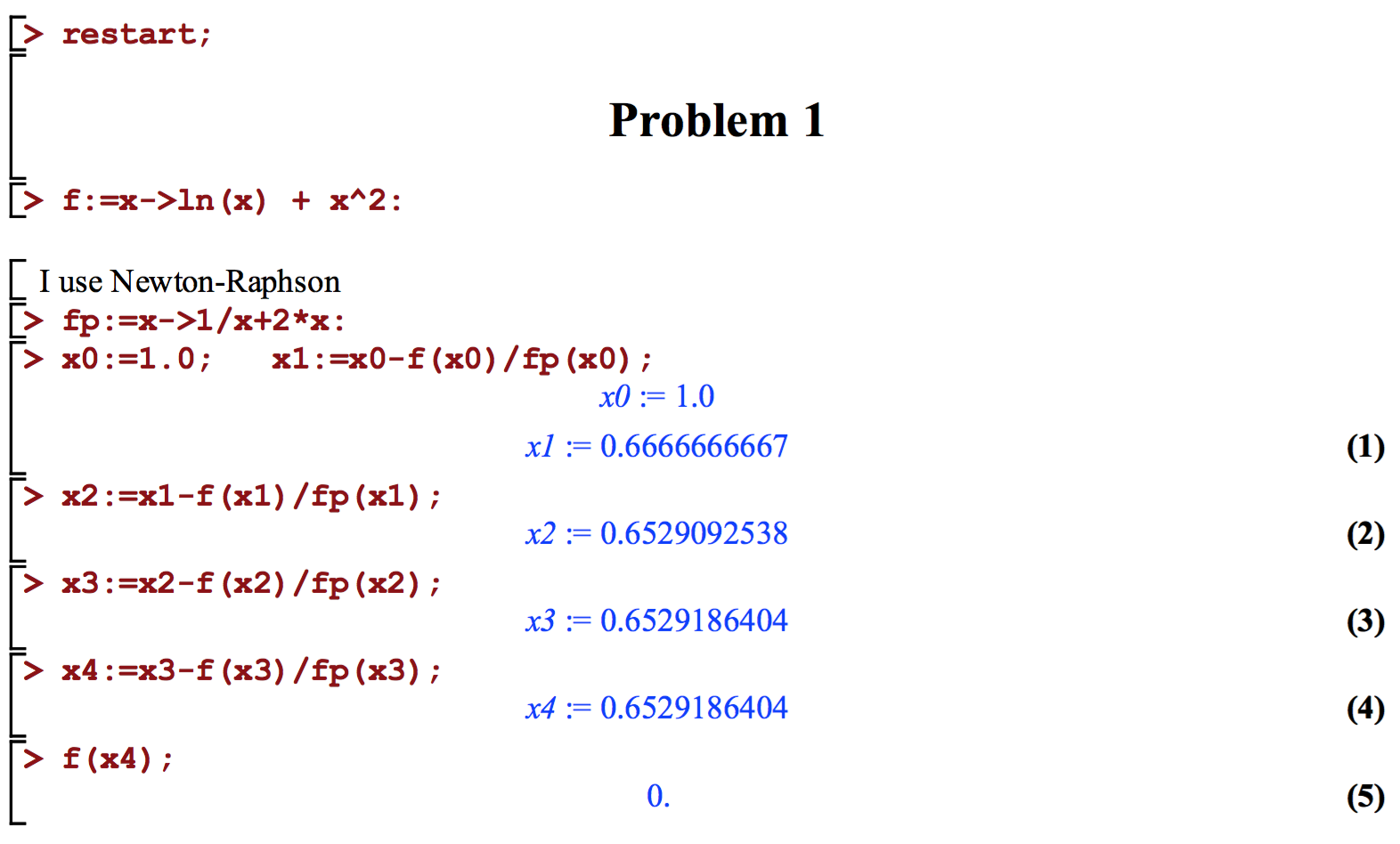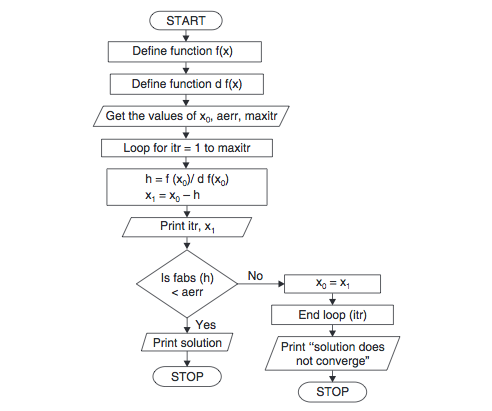

#Code matlab of newton raphson method code#
Here is the code for bisection by itself. % while continuing to span a sign change. % The idea is to repeatedly cut the interval $$ in half, % The reliable, fail-safe portion of _zeroin_ is the bisection algorithm. % functions iterate until the length of the interval $$ is of size

% specifying the length of the convergence interval. % I have simplified the calling sequence by eliminating the tolerance However it may fail if the there are local minimums, the condition of the. In general for well behaved functions and decent initial guesses, its convergence is at least quadratic. It is based on the Newton-Raphson method in chapter 9.6-7 of Numerical Recipes in C. % arithmetic, so we set our goal to be finding a much smaller subinterval Although this is the most basic non-linear solver, it is surprisingly powerful. % function of a real variable becomes a bit elusive in floating point % the given function $f(x)$ changes sign. % Dekker's algorithm needs to start with an interval $$ on which % left hand one-sixth of the above $x$-axis between these two points. % only portion of the real line where the function is positive is on the R = find((=)=0) %look up for nearby machine number zeros Rr = find(sign(y)=0) %look up for machine number zeros Z = round(1e9*zz)*1e-9 % Get rid of spurious differences Of course, the code above will miss roots that were too close together compared to the discretization interval of 0.1 that I chose. The last 2 lines of the code are incorrect as when i tried some different. Now i would like to plot the points of intersection that were found through the newton raphson's method. Xroots(i) = fzero(fun,xs(scinter(i) + )) plot ( xnew, 0.719, 'r' ) plot ( new, -0.719, 'r' ) This is after plotting the 2 graphs before cos (x) and sin (x). I carefully chose code such that the first interval would be found, so fzero will find the zero at 0.

See that there were 85 intervals found where a sign change occurred. Then call fzero on each interval where a sign change was found. In the beginning of the problem we divide the ODE. it used the Newton Raphson method in the iteration process to approach the exact solution and finally end the iteration when y (1) is accurately converged up to the third decimal. I am always pleased with the capabilities of chebfun (as found on the file exchange.) It seems to have had no problem in finding all 85 roots of that function over the interval of interest.Īs an alternative, one could simply sample the function at a fine interval, looking for any sign changes. The code below solve this initial value problem (IVP) using the function ode45.


 0 kommentar(er)
0 kommentar(er)
